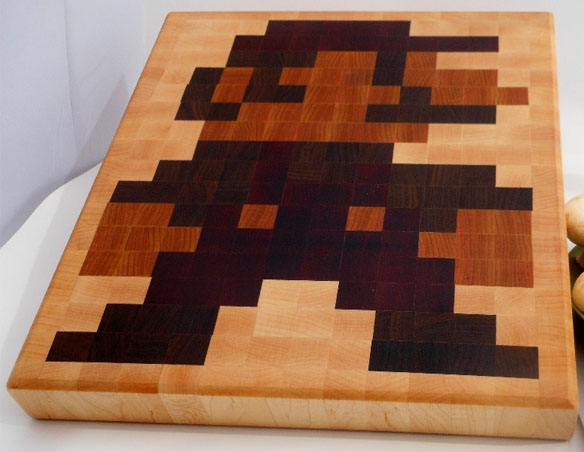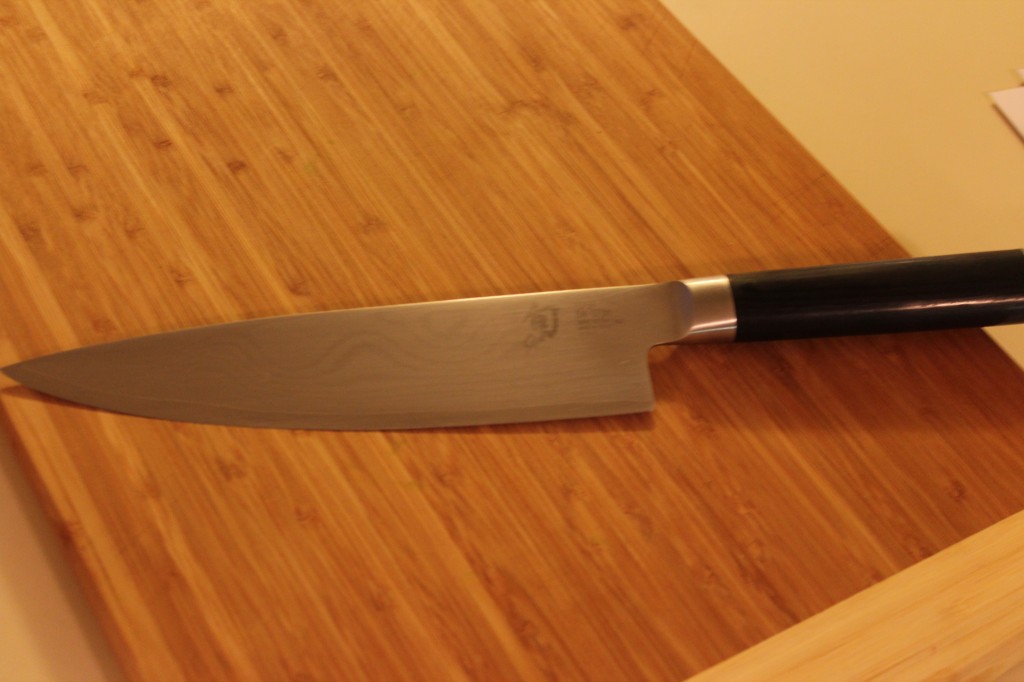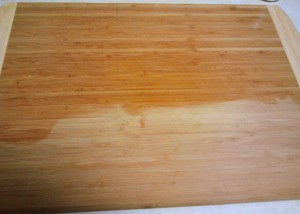Archive for January 31st, 2013
If you take cooking seriously, you know that there are lots of tertiary skills which go along with cooking which really have nothing to do with applying heat and seasoning to food. This will be – hopefully – the start of a recurring series which examines some of those aspects of the culinary world. What can you expect from this series of posts? Things along the lines of choosing a knife, sharpening a knife, roasting and grinding spices, seasoning a cast iron pan, choosing the right pan, things along those lines.
In the inaugural post in this series, we are going to examine…. cutting boards!
Wait…don’t go! I see you closing your laptop! Look, I know cutting boards are not a sexy topic, certainly not as fun as looking at knives. But really, what the hell is the point of buying a $400 kitchen knife if you’re going to destroy it within a week by using a glass cutting board? As with anything, the fundamentals may not be exciting, but without them you’re really going to struggle down the line. So read on!
Choosing Your Board
There are TONS of choices when it comes to cutting boards. You can go with wood, bamboo, plastic, glass, stone, steel, or rubber. Well, technically you can go with any of those choices. In reality, you can pick between wood, bamboo or plastic/rubber. “But Loren”, you cry, “my marble cutting board looks so snazzy! And it’s really easy to clean, I can even throw it in the dishwasher!” POPPYCOCK, I retort! Fine, I guess you can keep using it if you want, but promise me you won’t ever spend more than $10 on a knife, because you will be throwing money away. A glass or marble or steel or stone cutting board is pretty much the worst possible thing you can do to your kitchen knives. Any time your cutting board is made of a material which is very hard, it will very rapidly dull your knife, and might even chip the blade if you’re not careful. These materials are just not meant to be used as cutting boards, despite how easily they clean.  If you already have one, you don’t have to get rid of it, just use it as a cheeseboard or serving platter or something.

The best part about butcher blocks? They are ideal for recreating the 8 bit video game characters of your childhood.
Having settled that, let’s look at wood or bamboo cutting boards. First, the upsides: they look nice, and they are very easy on your knives. The downsides? Well, you can’t put them in the dishwasher, the bigger butcher blocks can be quite heavy, and they require a little maintenance on your part.
There is also a difference between thinner, flat grain boards and the big, thick butcher blocks which are end grain boards. While the ends grain boards are a little less convenient since they are more heavy and ungainly, they are much, much better for your knives. Basically, because the grains are running vertically, your knife essentially pushes the grain apart rather than crushing it or cutting it. When you take the knife away, the grains actually close back up so these boards are more resistant to showing cuts and nicks as well.
As for plastic boards: they are cheap, they clean up easily, they can go in the dishwasher, and they’re light. Some of them even have rubber feet or bottoms built in to prevent slipping on the counter. The problem? They just don’t lend the same kind of gravitas to your kitchen or your cooking. If you’re a serious cook, it makes sense to have a serious board, doesn’t it?
Really the best thing to do is have several. I have one wooden butcher block, one large bamboo board, and a few smaller plastic boards. This provides me with a little flexibility. If I’m pressed for time, I can use a board that can be put in the dish washer. If I’m prepping multiple components of a good meal, I can do all the veggies on a wood board and switch to plastic for the meat to prevent cross contamination.
 Caring for your Cutting Board
Assuming you haven’t already tossed aside my concerns about the relative lack of gravitas and decided to go exclusively with plastic boards, you are going to need to know how to clean maintain your wood or bamboo cutting board.The first rule of cleaning wood boards is: do not submerge them in water. The second rule of cleaning wood cutting boards is: DO NOT SUBMERGE THEM IN WATER. Being a piece of dried wood, your board’s natural reaction to being submerged in water for any length of time will be to absorb that water, which is going to cause you all kinds of problems, namely the wood will bulge, warp and crack. Once these things start happening, there is really no reversing them, you can only hope to keep the problem from getting worse. So, to clean your cutting board, just use a damp cloth and mild soap. This isn’t enough to seriously disinfect, but that’s OK because you already have a plastic board for cutting your meat, right? No? Jeez… alright. If you absolutely must use your wooden board for all tasks, including cutting meat, you can use a mild bleach or vinegar solution to disinfect the wood. Don’t make this a habit though.
Finally, you’ll need to oil your board every month or two to keep it up to shape. There are a good amount of products out there which are specifically designed for cutting board maintenance, some including protective waxes, but you really don’t need to go that route. Just a simple bottle of mineral oil will do the trick. Don’t try to use a vegetable oil of any kind, as they will turn rancid. Â Apply a
generous layer to one side of your board and wipe down with a paper towel or clean rag to make sure you have even coverage, then let the board sit for a few hours. Come back and get the other side, along with the vertical and horizontal faces and let sit for another few hours. If you have a big, thick board or block, you may need to repeat this process several times. Afterward, if there is still an oily film on the board, give it a quick wash.


